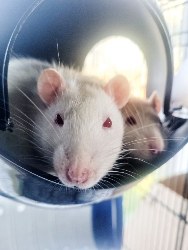Shooting stars hold answers to universe questions
Shooting stars hold answers to questions about universe
Meteors – the shooting stars occasionally flashing
through the night sky – could help answer questions about
the origin of our solar system.
Professor Jack Baggaley
at the University of Canterbury has been awarded a grant
from the competitive Marsden Fund to determine the exact
source of the many tiny grains of dust we see as shooting
stars as they burn after entering the Earth’s
atmosphere.
Most of these dust grains originate in our own
solar system as debris left over from the break-up of
comets. However, a small proportion enter our atmosphere
coming directly from interstellar space – the vast regions
between the stars. These particles form dust clouds in space
which are known to be the nurseries for young stars, newly
formed planetary systems and perhaps life itself.
The
trail left by meteors as they plunge into the atmosphere can
be detected with the help of radar techniques by bouncing a
radio signal off the moving particle and recording the echo.
New Zealand is home to a unique radar facility, the Advanced
Meteor Orbit Radar or AMOR, which can determine accurate
positions for the meteor’s trail. Using this technique,
Professor Baggaley has already been able to demonstrate that
some of the fiery dust grains piercing the Earth’s
atmosphere enter at much higher speed and a different angle
from the majority of particles.
The conclusion that, while most of the dust grains come from within the solar system, a small percentage indeed originates in outer space, brought Professor Baggaley’s group acclaim in the international science community. The group will further improve the AMOR system by building a second antenna pointing in a different direction to the original setup. This will greatly enhance the group’s ability to detect the meteors of interstellar origin and to determine their properties. The group is also working with scientists from the European Space Agency, comparing their data with those obtained from space probes such as Galileo and Ulysses.
Their results will lead to a
better understanding of interstellar dust and its role in
the formation of planetary systems such as our solar
system.
Professor Baggaley’s grant is worth $145,000 for
the first year, and $135,000 for each of the following two
years.


 Business Canterbury: Urges Council To Cut Costs, Not Ambition For City
Business Canterbury: Urges Council To Cut Costs, Not Ambition For City Wellington Airport: On Track For Net Zero Emissions By 2028
Wellington Airport: On Track For Net Zero Emissions By 2028 Landcare Research: ANZAC Gall Fly Release Promises Natural Solution To Weed Threat
Landcare Research: ANZAC Gall Fly Release Promises Natural Solution To Weed Threat NZ Anti-Vivisection Society: Auckland Rat Lovers Unite!
NZ Anti-Vivisection Society: Auckland Rat Lovers Unite! University of Canterbury: $1.35 Million Grant To Study Lion-like Jumping Spiders
University of Canterbury: $1.35 Million Grant To Study Lion-like Jumping Spiders Federated Farmers: Government Ends War On Farming
Federated Farmers: Government Ends War On Farming



